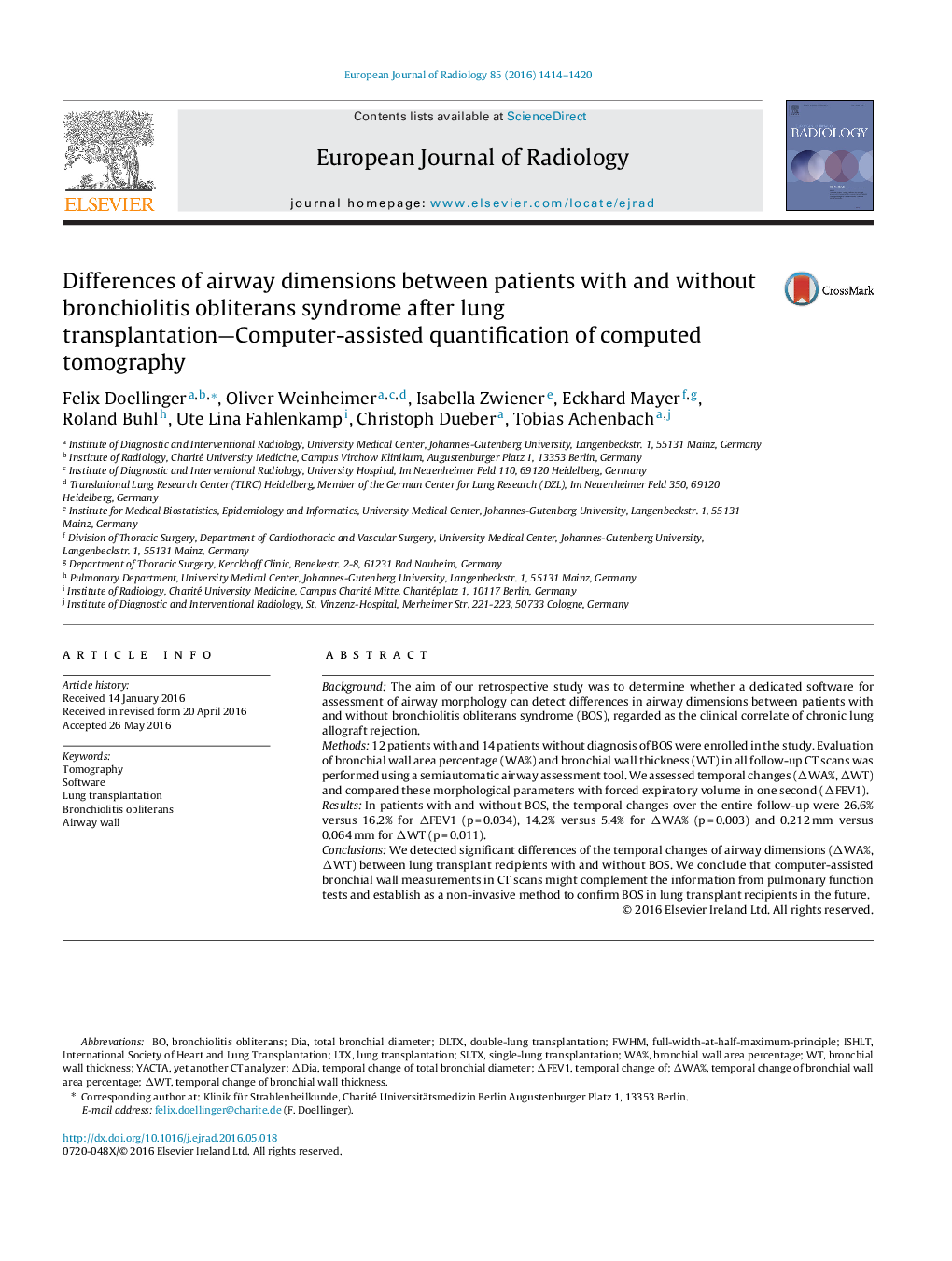| Article ID | Journal | Published Year | Pages | File Type |
|---|---|---|---|---|
| 6242942 | European Journal of Radiology | 2016 | 7 Pages |
â¢Computed tomography findings of chronic lung allograft rejection are highly unspecific.â¢A dedicated software can perform reproducible measurements of airway dimensions.â¢Morphological parameters showed significant differences of airway wall dimensions between patients with and without BOS.â¢Computer-assisted airway wall measurements might help to differentiate between patients with and without rejection.
BackgroundThe aim of our retrospective study was to determine whether a dedicated software for assessment of airway morphology can detect differences in airway dimensions between patients with and without bronchiolitis obliterans syndrome (BOS), regarded as the clinical correlate of chronic lung allograft rejection.Methods12 patients with and 14 patients without diagnosis of BOS were enrolled in the study. Evaluation of bronchial wall area percentage (WA%) and bronchial wall thickness (WT) in all follow-up CT scans was performed using a semiautomatic airway assessment tool. We assessed temporal changes (ÎWA%, ÎWT) and compared these morphological parameters with forced expiratory volume in one second (ÎFEV1).ResultsIn patients with and without BOS, the temporal changes over the entire follow-up were 26.6% versus 16.2% for ÎFEV1 (p = 0.034), 14.2% versus 5.4% for ÎWA% (p = 0.003) and 0.212 mm versus 0.064 mm for ÎWT (p = 0.011).ConclusionsWe detected significant differences of the temporal changes of airway dimensions (ÎWA%, ÎWT) between lung transplant recipients with and without BOS. We conclude that computer-assisted bronchial wall measurements in CT scans might complement the information from pulmonary function tests and establish as a non-invasive method to confirm BOS in lung transplant recipients in the future.
